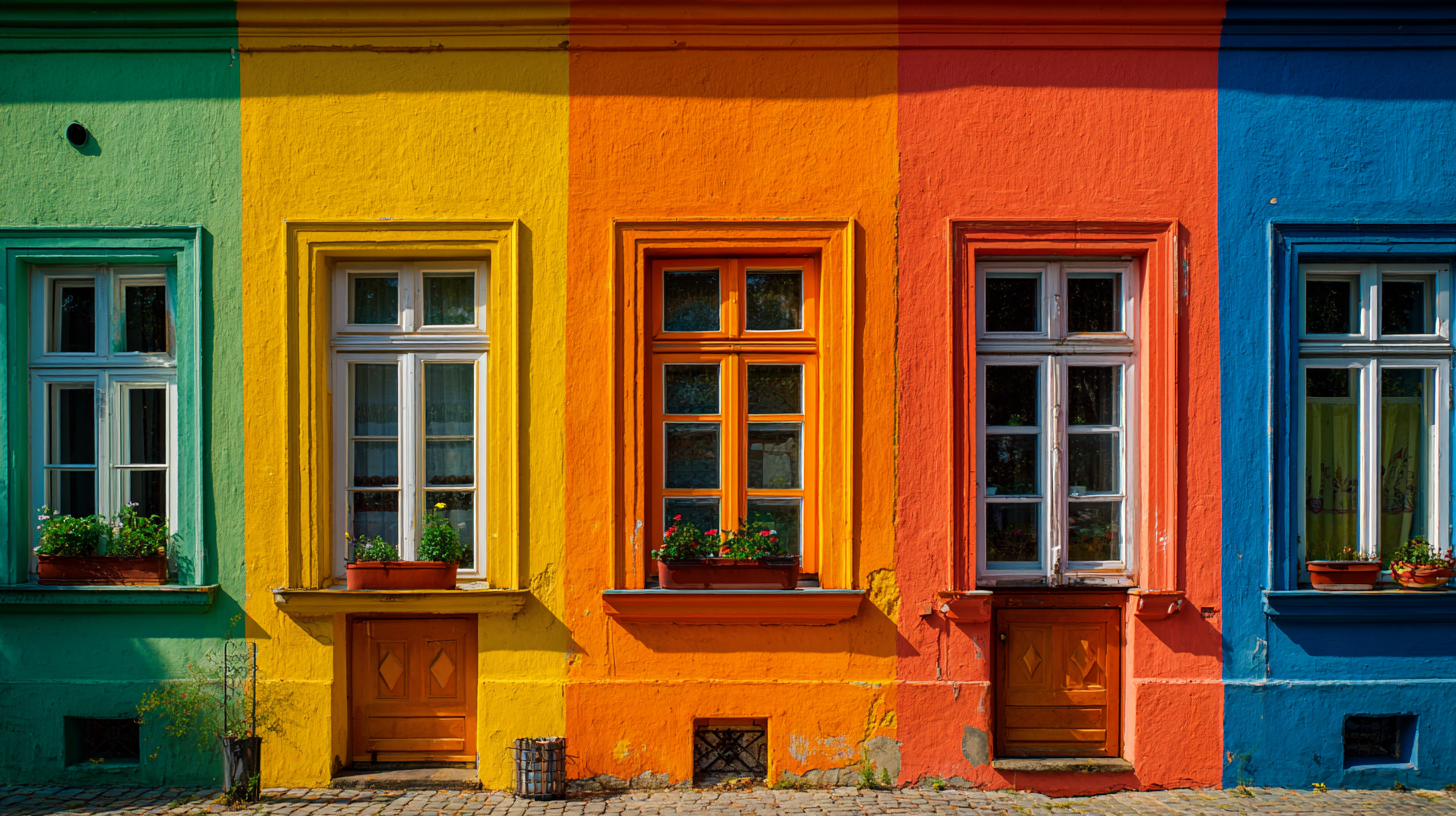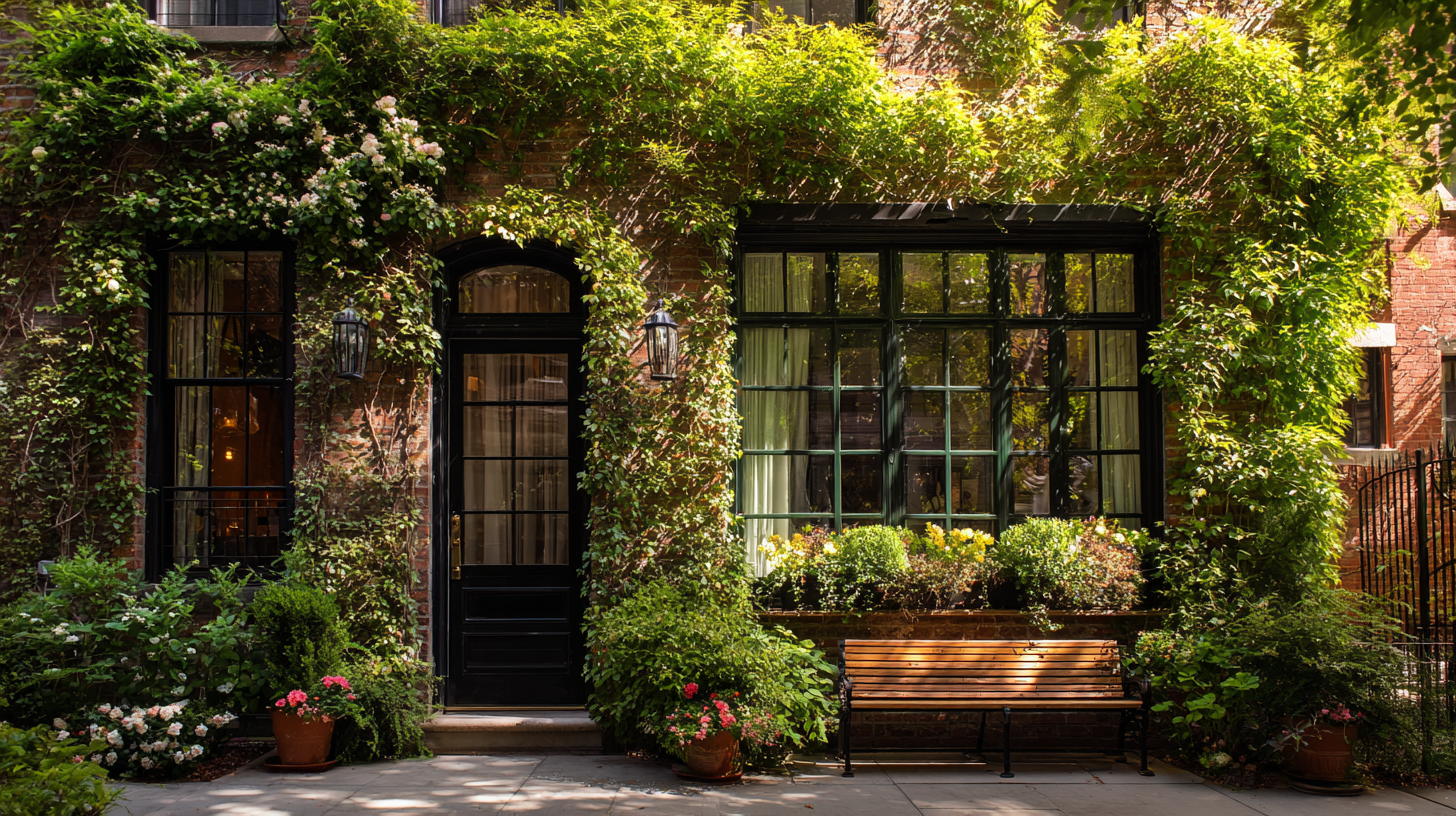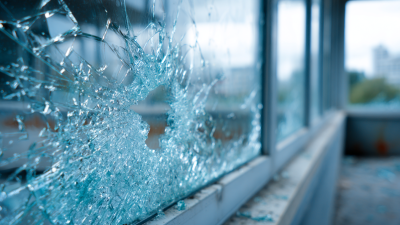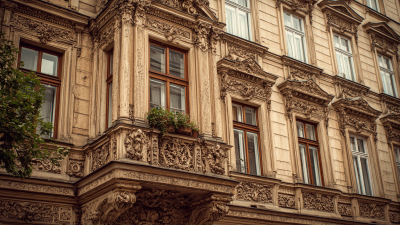As homeowners increasingly seek to improve energy efficiency, enhancing home windows has emerged as a pivotal strategy. According to the U.S. Department of Energy, nearly 30% of a home's heating and cooling energy is lost through inefficient windows, making them a significant factor in energy consumption. In fact, energy-efficient windows can reduce energy bills by up to 25%, providing both financial savings and a positive environmental impact. With innovative advancements in window technology and design, there are numerous creative solutions at your disposal to enhance your home windows. From incorporating window films to optimizing frame materials, implementing these strategies can significantly bolster energy efficiency while also enhancing the aesthetic appeal of your living space. In this article, we explore ten creative ways to maximize the potential of your home windows for better energy efficiency, ensuring comfort and sustainability for years to come.

Double-glazing is a powerful technique for improving thermal insulation in windows, making it a popular choice among homeowners seeking to enhance energy efficiency. According to the U.S. Department of Energy, windows account for approximately 25-30% of residential heating and cooling energy use. By incorporating double-glazed windows, homeowners can significantly reduce energy consumption, as these windows are designed to trap air between two panes of glass. This air layer acts as an effective insulating barrier, reducing heat transfer and keeping homes warmer in winter and cooler in summer.
Furthermore, a study from the National Renewable Energy Laboratory (NREL) indicates that double-glazing can lead to energy savings of 10-25% on heating and cooling costs. In addition to cost savings, double-glazed windows also contribute to a more comfortable living environment by minimizing drafts and reducing noise pollution. The Environmental Protection Agency (EPA) also highlights that improving window insulation can help reduce carbon emissions, thereby contributing to a more sustainable future. With these benefits in mind, upgrading to double-glazed windows not only enhances a home’s energy efficiency but also supports environmental stewardship and long-term economic savings.
| Enhancement Method | Description | Energy Savings (%) | Cost (Estimated USD) | Installation Time (Hours) |
|---|---|---|---|---|
| Double-Glazing | Installing two layers of glass to improve insulation. | 30% | $200 - $700 per window | 2 - 4 |
| Window Films | Applying reflective or tinted films to reduce heat transfer. | 10% | $5 - $15 per square foot | 1 - 2 |
| Low-E Glass | Using glass with a low-emissivity coating to minimize heat loss. | 25% | $150 - $500 per window | 2 - 5 |
| Energy-Efficient Shades | Installing cellular shades that trap air for insulation. | 20% | $30 - $150 per shade | 1 - 3 |
| Weatherstripping | Sealing gaps around windows to prevent drafts. | 15% | $15 - $50 | 1 |
| Exterior Shutters | Installing shutters to provide an extra layer of insulation. | 15% | $200 - $600 | 2 - 4 |
| Storm Windows | Adding a second layer of protection against heat loss. | 20% | $100 - $400 | 3 - 5 |
| Window Screens | Installing screens to reduce heat from sun exposure. | 5% | $10 - $30 per screen | 1 |
| Regular Maintenance | Cleaning and servicing windows to maintain efficiency. | Varies | $50 - $200 annually | 1 - 2 |
| Interior Insulation | Using insulated curtains or shades to retain heat. | 15% | $30 - $100 per set | 1 - 2 |
When it comes to enhancing energy efficiency in your home, understanding the difference between insulating curtains and traditional blinds is crucial. According to the U.S. Department of Energy, windows account for 10-25% of a home's heating and cooling costs. Insulating curtains can significantly reduce heat loss by up to 25%, creating a barrier that helps to maintain a consistent indoor temperature. These curtains are often made from multiple layers of fabric and may feature thermal linings that reflect heat back into the home during colder months, making them a smart choice for energy-conscious homeowners.
On the other hand, traditional blinds, while effective at controlling light, may not provide the same level of insulation. A study from the Lawrence Berkeley National Laboratory indicates that while blinds can minimize heat gain during the summer when closed, their insulating properties are limited compared to curtains specifically designed for thermal efficiency. This means homeowners might find themselves frequently adjusting blinds to enhance comfort, whereas insulating curtains offer a more seamless solution for year-round energy savings. Understanding these distinctions can guide you in making informed choices that improve the overall energy performance of your home.

Implementing window films is a cost-effective method for reducing heat gain and loss in homes, contributing to overall energy efficiency.
According to the U.S. Department of Energy, window films can block up to 99% of UV rays, which helps protect furnishings from fading while also enhancing comfort.
By applying these films, homeowners can reduce their reliance on air conditioning in the summer by up to 40%, leading to substantial savings on energy bills.
Tip: When choosing window films, opt for those with a high visible light transmission rating to maintain natural light while maximizing energy efficiency.
In addition to decreasing heat transfer, window films are available in a variety of styles and tints, allowing for aesthetic customization that can match any home decor.
The Lawrence Berkeley National Laboratory reports that these films can improve single-pane windows' energy performance to the level of double-pane windows, making them a wise investment for older homes.
Tip: Ensure proper installation by hiring certified professionals to maximize the film's performance and lifespan.
Low-emissivity (Low-E) glass is a remarkable innovation in window technology that significantly enhances energy efficiency while offering superior UV protection. This specialized glass is coated with a microscopically thin layer of metallic oxide, which reflects heat back into the living space during winter while keeping it out during the summer. By minimizing heat transfer, Low-E glass helps maintain a comfortable indoor temperature year-round, ultimately reducing reliance on heating and cooling systems. This translates not only to lower energy bills but also to a reduced carbon footprint.
In addition to its excellent thermal performance, Low-E glass also blocks harmful ultraviolet rays that can damage furniture, carpets, and artworks. By filtering out up to 99% of UV radiation, homeowners can preserve their interiors from fading and deterioration. Moreover, this glass offers enhanced visual clarity and transparency, allowing natural light to flood in without compromising on protection. Embracing Low-E glass windows is a forward-thinking approach for homeowners looking to improve energy efficiency while safeguarding their living spaces from the potential adverse effects of prolonged sun exposure.
Proper window sealing is essential to enhance energy efficiency in your home. One effective technique is applying weatherstripping, which helps eliminate gaps around the window sashes. This simple installation can significantly reduce air leakage, maintaining a comfortable indoor climate and lowering energy bills. Different materials are available for weatherstripping, including foam, V-strip, and felt, catering to various needs and budget considerations.

Another valuable method to seal windows is the use of caulk. Apply caulk to any cracks or joints where the window frame meets the wall, ensuring a tight seal against external air. It's crucial to use a high-quality caulk designed for outdoor use, as it will withstand the elements better and provide long-lasting protection. Regular inspections of your window seals are also vital, as wear and tear can occur over time, and timely maintenance can prevent more significant issues in the future. By prioritizing proper sealing techniques, you can greatly improve your home's energy efficiency and overall comfort.







© 2025 RWC. All Rights Reserved. | Privacy Policy | Contractor’s License Number: 13VH00710200 | Sitemap | Areas Served
